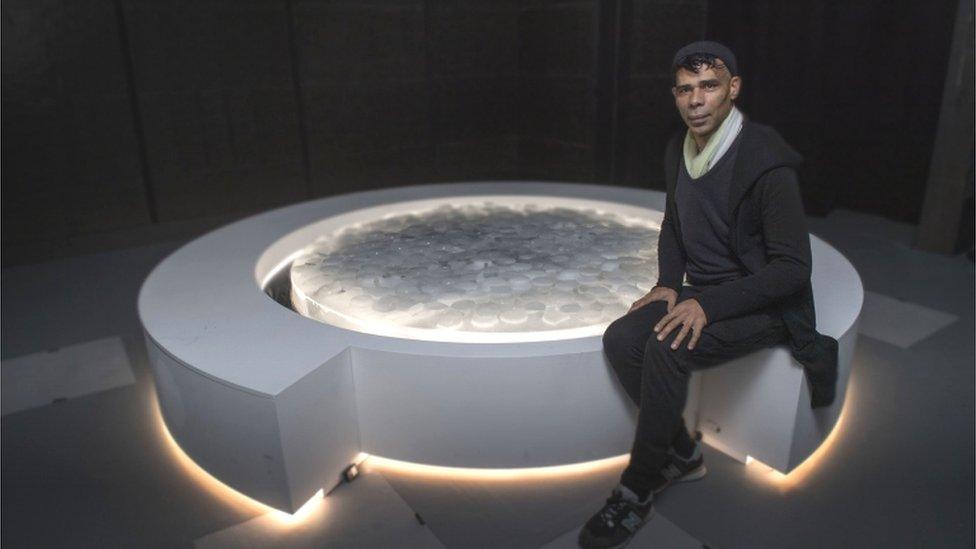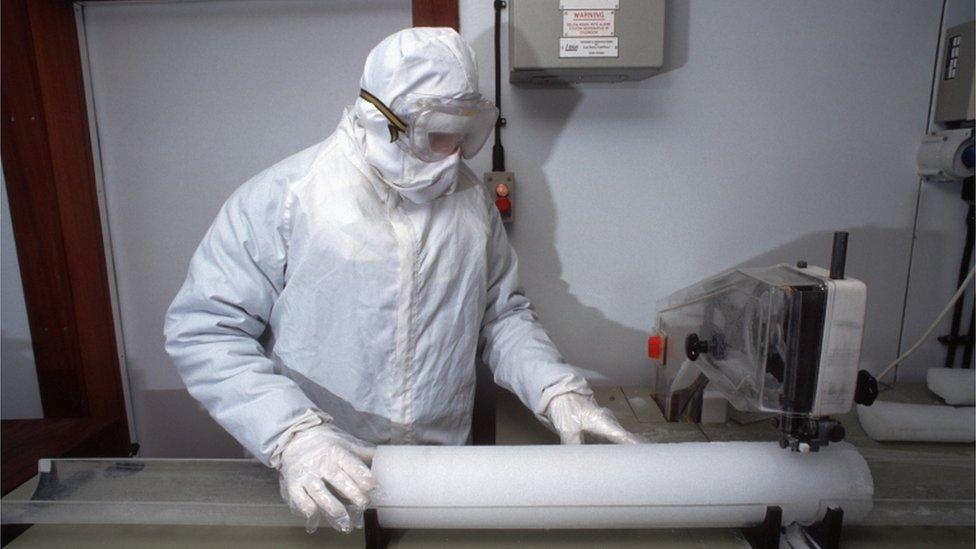COP26: Sculpture to capture ice-core air from 350 years ago
- Published
- comments

Artist and sculptor Wayne Binitie will display his artworks in the Polar Zero exhibition at the Glasgow Science Centre
A glass sculpture containing Antarctic air from the year 1765 will feature in a new exhibition to draw attention to climate change.
The Polar Zero exhibition will take place at the Glasgow Science Centre during the COP26 climate change conference.
Artist and sculptor Wayne Binitie says he is aiming to bring climate science, art and engineering together to explore the issue of climate change in new ways.
The show will feature a glass sculpture containing air from 350 years ago extracted from an Antarctic ice core containing tiny bubbles of air.

How was it made?
Wayne Binitie has spent the last five years collaborating with British Antarctic Survey (BAS) scientists, who drill, study and preserve cylinders of ice from deep in the Antarctic ice sheet that record past climate change. BAS ice core scientist Dr Robert Mulvaney said he hopes the sculpture, using an air sample from 170 meters deep in the ice, will spark people's imagination.

A scientist examines an ice core drilled in the Antarctic from which air has been recovered
"Ice cores are the only place on Earth you can still find old air. There are lots of things that capture climate change, things like tree rings, peat bogs, corals, they all remember climate change in their structure or their chemistry.
"Ice does the same... But the thing that's really absolutely critical about ice cores is that there are these little tiny bubbles of air trapped in the ice that are the actual atmosphere from the past."
What's it like to live in Antarctica?
Why air from 1765?
The year 1765 is considered a pivotal point as that was when engineering improvements to the steam engine helped to drive the industrial revolution.

The industrial revolution led to big changes in the way the UK developed into a leading global power and also saw a big growth in emissions
Dr Mulvaney said ice core analysis shows that in around 1765, the atmosphere was 280 parts of carbon dioxide per million, which had been pretty constant for about 10,000 years.
But from that point the level of carbon dioxide started to increase, and the average in the atmosphere in May this year was 419 parts per million.
